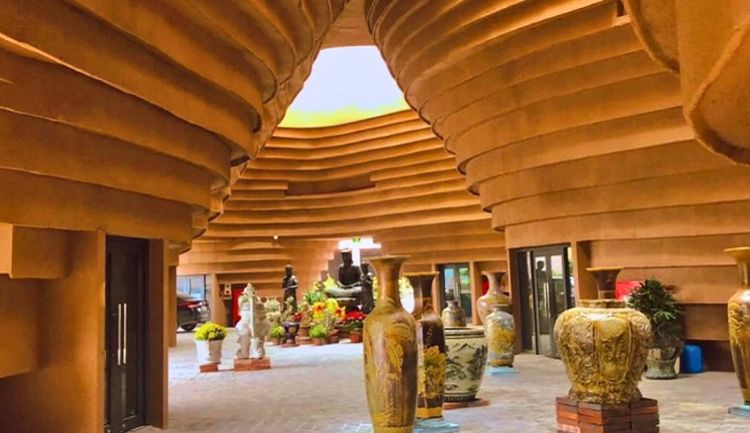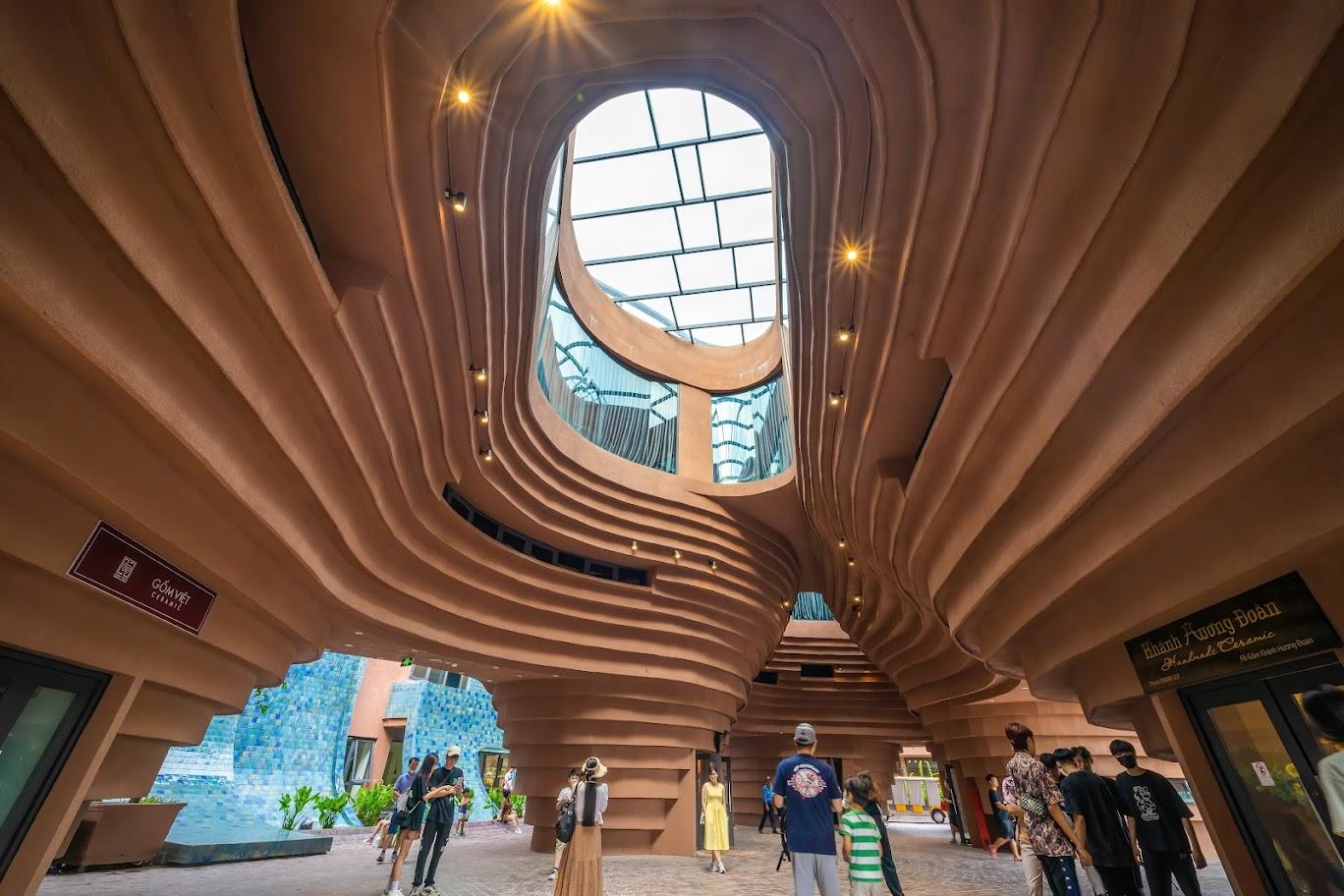News
Discovering the Bát Tràng Museum – A Journey into Vietnam’s Ceramic Heritage
The Bát Tràng Museum is a captivating destination that offers deep insight into the rich tradition of Vietnamese ceramics. Located in the historic Bát Tràng village, this museum showcases an extensive collection of pottery and ceramic art that chronicles centuries of craftsmanship, culture, and innovation. Whether you are a history enthusiast, art lover, or curious traveler, the Bát Tràng Museum provides an immersive experience into one of Vietnam’s most treasured cultural legacies.
Who is Behind the Bát Tràng Museum

Understanding the origins and people responsible for the Bát Tràng Museum gives visitors more appreciation for its significance and authenticity. This section unravels the background, creators, and caretakers of the museum to illuminate the passion and dedication that have preserved this ceramic tradition.
Before diving into detailed subtopics, it is important to recognize that the museum is not just a repository of artifacts; it is a living testament to the enduring legacy of Bát Tràng village, often called the birthplace of Vietnamese ceramics.
The Founders of the Bát Tràng Museum
The Bát Tràng Museum was established by local artisans and historians who were committed to preserving the unique ceramic culture of their community.
These founders recognized that the delicate art form, which had been passed down through generations, needed a dedicated space for education and preservation. Their vision was to create a museum that would serve both as a cultural hub and a workshop where traditional techniques could continue to thrive.
Their efforts were supported by local government initiatives aimed at promoting cultural tourism and heritage conservation. Over time, the museum grew into a collaborative project involving artists, scholars, and craftsmen united by a shared mission.
The Artisans’ Role in Preserving Tradition
Artisans from Bát Tràng village remain central to the museum’s operations. Many exhibit their own works and conduct live demonstrations, providing visitors with firsthand views of traditional ceramic processes such as molding, glazing, and firing.
This collaboration between the museum and local craftsmen ensures that visitors do not merely see static objects but witness the vibrant continuation of a craft that has survived wars and modernization.
The artisans’ involvement also helps maintain authenticity, making the museum a dynamic space where history and contemporary creation intersect.
Historians and Curators Shape the Narrative
Apart from artisans, historians and curators play a crucial role in contextualizing the exhibits. They research the origins, styles, and evolution of Bát Tràng ceramics, curating collections that reflect different historical periods and artistic influences.
Their scholarship enriches the visitor experience by providing detailed explanations, multimedia presentations, and engaging storytelling that connects objects to broader cultural and historical themes.
This multidisciplinary approach ensures the museum remains informative, accessible, and relevant to diverse audiences.
How to Visit the Bát Tràng Museum

Planning a visit to the Bát Tràng Museum enhances your experience by helping you navigate its location, hours, and offerings effectively. This section provides practical advice on how to get there, what to expect, and how to make the most of your time.
Visiting a museum like Bát Tràng requires some preparation, especially for international tourists or those unfamiliar with the region.
Location and Getting There
The Bát Tràng Museum is located in Bát Tràng village, approximately 13 kilometers southeast of Hanoi city center. The village is accessible by various modes of transportation including taxi, motorbike, and public bus.
Tourists can hire a private car or join organized tours from Hanoi, which often combine museum visits with pottery workshops and market strolls.
For budget travelers, taking bus number 51 or 54 from Hanoi is convenient, though less direct. It is advisable to check current schedules prior to travel due to occasional route changes.
Opening Hours and Admission Fees
The museum typically operates from 8:00 AM to 5:00 PM daily, with last admissions around 4:30 PM. It is recommended to arrive early to avoid crowds and allow ample time for exploration.
Admission fees are modest and may vary based on age and nationality. Discounts often apply for students, seniors, and groups. Some special exhibitions or workshops might require additional fees.
Visitors should check the museum’s official website or contact the front desk ahead of time to confirm up-to-date information.
What to Expect During Your Visit
Inside, expect to find a beautifully arranged collection of ceramic pieces ranging from ancient artifacts to modern interpretations. The layout is designed to guide visitors chronologically through the development of Bát Tràng ceramics.
Apart from static displays, interactive sections allow hands-on participation in pottery-making. Educational materials, multilingual signage, and knowledgeable staff enhance understanding.
The museum also features a gift shop selling authentic ceramic products, providing an excellent opportunity to support local artisans.
Pros and Cons of Visiting the Bát Tràng Museum

Like any cultural destination, the Bát Tràng Museum possesses strengths and limitations. Understanding these pros and cons can help visitors set realistic expectations and decide whether the museum aligns with their interests.
The following analysis delves into aspects ranging from educational value to accessibility.
Advantages of the Bát Tràng Museum
One of the biggest advantages is the authenticity and depth of the collection. Unlike generic museums, Bát Tràng focuses exclusively on ceramics originating from the village, offering a rare glimpse into local craft heritage.
The presence of working artisans who demonstrate traditional techniques adds an experiential dimension rarely found elsewhere. This live element transforms the museum into a space where history is actively made rather than simply displayed.
The location within the village itself allows visitors to explore local markets, workshops, and eateries, enriching the cultural immersion.
Furthermore, the museum’s educational programs and workshops provide valuable learning opportunities for children, students, and enthusiasts.
Challenges and Limitations
On the downside, the museum may feel small compared to larger institutions, limiting the scope of exhibits. Visitors expecting a vast array of international ceramics might be disappointed.
Language barriers can also pose challenges since some informational materials and guided tours are primarily in Vietnamese. While efforts to increase English translations exist, they are not always comprehensive.
Additionally, the village’s relative distance from Hanoi center can be inconvenient for those with limited time or mobility issues.
Limited facilities such as cafes or resting areas inside the museum might reduce comfort for some tourists.
Balancing Expectations with Experience
Despite these cons, many visitors find the museum worthwhile for its intimate portrayal of a single craft tradition and the chance to witness artisanship in action.
For those interested in Southeast Asian culture, ceramics, or hands-on learning, the advantages outweigh inconveniences.
Planning ahead—such as hiring guides or combining the visit with nearby attractions—can mitigate the downsides significantly.
Alternatives to the Bát Tràng Museum
For travelers or researchers seeking different experiences related to ceramics or Vietnamese culture, several alternatives offer unique perspectives. These options can complement or substitute a visit to the Bát Tràng Museum depending on preferences.
Exploring these alternatives broadens understanding of Vietnam’s diverse artistic landscape.
Vietnam Museum of Ethnology
Located in Hanoi, the Vietnam Museum of Ethnology presents a wider cultural panorama including ceramics from multiple ethnic groups.
Unlike the specialized focus at Bát Tràng, this museum covers folklore, traditional costumes, and rituals alongside crafts, providing a more holistic view of Vietnam’s ethnic heritage.
Its extensive collection includes ceramics but within a broader anthropological framework.
National Museum of Vietnamese History
Also in Hanoi, this museum offers historical context with artifacts spanning thousands of years, including ancient ceramics.
Visitors interested in archaeological insights or the evolution of material culture may find this museum enriching.
It complements the artisan focus of Bát Tràng by presenting ceramics as part of Vietnam’s long historical narrative.
Bat Trang Ceramic Workshops
For a more immersive hands-on experience, participating directly in Bat Trang ceramic workshops scattered throughout the village offers an alternative to museum visits.
Many studios welcome tourists to create their own pottery under expert guidance. This practical engagement deepens appreciation of the craft beyond observation.
Workshops vary in complexity and duration, catering to all skill levels.
Step-by-Step Guide to Experiencing the Bát Tràng Museum
To maximize enjoyment and learning, this section breaks down a structured approach to visiting the Bát Tràng Museum—from planning your trip to post-visit reflections.
By following these steps, visitors can ensure a smooth, rewarding cultural journey.
Planning and Preparation
Start by researching opening hours, ticket prices, and transportation options. Decide whether to go independently or join a tour.
Booking tickets online, if available, can save time. Packing essentials include comfortable shoes, a camera, water, and notebook for observations.
Learn a few Vietnamese phrases related to greetings and ceramics to facilitate interactions.
Arrival and Orientation
Upon arrival, obtain a map or guide brochure. Spend a few minutes orienting yourself to the layout and scheduled demonstrations.
If available, attend an introductory video or briefing session to understand the museum’s objectives.
Take note of restrooms, exits, and meal facilities.
Exploring Exhibits and Demonstrations
Follow the chronological exhibition trail to grasp the evolution of ceramic art in Bát Tràng.
Allocate time for live artisan demonstrations and participate actively if invited.
Ask questions to guides or craftsmen to deepen understanding.
Document favorite pieces or techniques for later reflection.
Participating in Workshops
If interested, enroll in a hands-on pottery session offered by the museum or nearby studios.
Engaging directly in shaping clay enhances comprehension of the skill involved.
Workshops also make memorable souvenirs.
Post-Visit Reflection and Purchase
After touring, visit the museum shop to purchase authentic ceramics that support local artisans.
Reflect on the visit by reviewing notes or discussing with fellow travelers.
Consider writing reviews or sharing experiences on social media to promote the museum’s cultural value.
Tips for Visiting the Bát Tràng Museum
To further enhance your visit, here are practical tips and insider advice gathered from frequent visitors and experts.
Applying these suggestions can transform a good visit into an exceptional one.
Visit During Off-Peak Hours
Early mornings or weekdays tend to be less crowded, allowing for quieter contemplation and better photo opportunities.
Avoid weekends and holidays when the museum and village bustle with tourists.
Hire a Knowledgeable Guide
A local guide fluent in English or your language can provide richer context, answer questions, and point out hidden details.
Guides often share stories and anecdotes unavailable in written materials.
Dress Comfortably and Modestly
Wear breathable clothing suitable for walking outdoors in hot weather. Since the museum involves interaction with clay, clothes that can get dusty are preferable.
Respectful attire is appreciated as the site holds cultural significance.
Bring Cash for Purchases and Workshops
Many workshops and vendors only accept cash. Having Vietnamese Dong on hand prevents inconvenience.
ATMs may not be immediate near the museum, so plan accordingly.
Combine the Visit with Nearby Attractions
Explore Bát Tràng village’s markets, temples, and street food stalls before or after the museum.
Scheduling a full-day itinerary maximizes cultural exposure.
Data Presentation on Visitor Insights at Bát Tràng Museum
The table below summarizes typical visitor demographics, satisfaction ratings, and popular activities based on recent surveys conducted at the Bát Tràng Museum:
| Category | Percentage (%) / Rating (out of 5) |
|---|---|
| Domestic Tourists | 60 |
| International Tourists | 40 |
| Average Visitor Age | 25-45 years |
| Visitor Satisfaction | 4.3 |
| Most Popular Activity | Artisan demonstrations |
| Workshop Participation | 35 |
| Recommended Visit Time | 2-3 hours |
| Accessibility Rating | 3.8 |
This data highlights the museum’s appeal mainly to young and middle-aged adults, a strong satisfaction level, and particular interest in interactive artisan sessions. Accessibility is moderate, suggesting room for improvements in infrastructure and language support.
FAQs About the Bát Tràng Museum
What makes the Bát Tràng Museum unique compared to other museums?
The museum specializes exclusively in ceramics from Bát Tràng village, showcasing centuries-old techniques alongside modern innovations, and integrates live artisan demonstrations, providing an immersive cultural experience distinct from general history or ethnology museums.
Is the Bát Tràng Museum suitable for children?
Yes, children can enjoy the interactive workshops and hands-on pottery-making activities, which are both educational and fun. The museum also offers simple explanations and visual aids to engage younger visitors.
How much time should I allocate for a visit to the Bát Tràng Museum?
Typically, visitors spend between two to three hours exploring exhibits, attending demonstrations, and possibly participating in workshops. Longer stays are recommended for those who want a deeper dive or to take part in extended classes.
Are there English-speaking guides available at the museum?
While some English-speaking guides and informational materials are available, availability can be limited. Hiring a private guide or joining a tour group often ensures better language support.
Can I buy authentic Bát Tràng ceramics at the museum?
Yes, the museum features a shop selling authentic, handmade ceramics crafted by local artisans. Purchasing from the museum supports the community and guarantees genuine products.
Conclusion
The Bát Tràng Museum stands as a vibrant gateway to Vietnam’s illustrious ceramic heritage, offering visitors a unique blend of history, artistry, and hands-on cultural interaction. From its passionate founders and skilled artisans to its carefully curated exhibits and engaging workshops, the museum provides a multifaceted experience that goes beyond mere observation. While it faces certain challenges such as size and language access, its strengths in authenticity and cultural immersion make it an invaluable destination for anyone interested in Vietnamese art and traditions. By following thoughtful planning and utilizing helpful tips, visitors can fully appreciate the richness of the Bát Tràng Museum and the living legacy of this iconic village.
